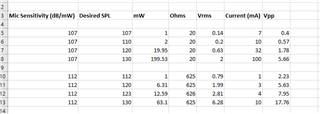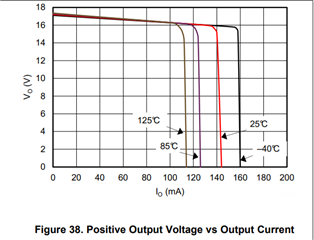Other Parts Discussed in Thread: INA1620
Hello,
I have to design an audio driver to drive a handset or headset:
Handset - 20 ohms and sensitivity 107 dB@1 mW
Headset - 625 ohms and sensitivity 112 dB@ 1mW
What op amp do you recommend? I saw the OPA1622 and it appears to be a good fit. I made a table below with SPL numbers and with this opamp if I power it at +/- 5V, I can go as high as 8Vpp it appears from the datasheet. 123 dB is fairly loud to the ear as the max output correct or do I need to go higher?




